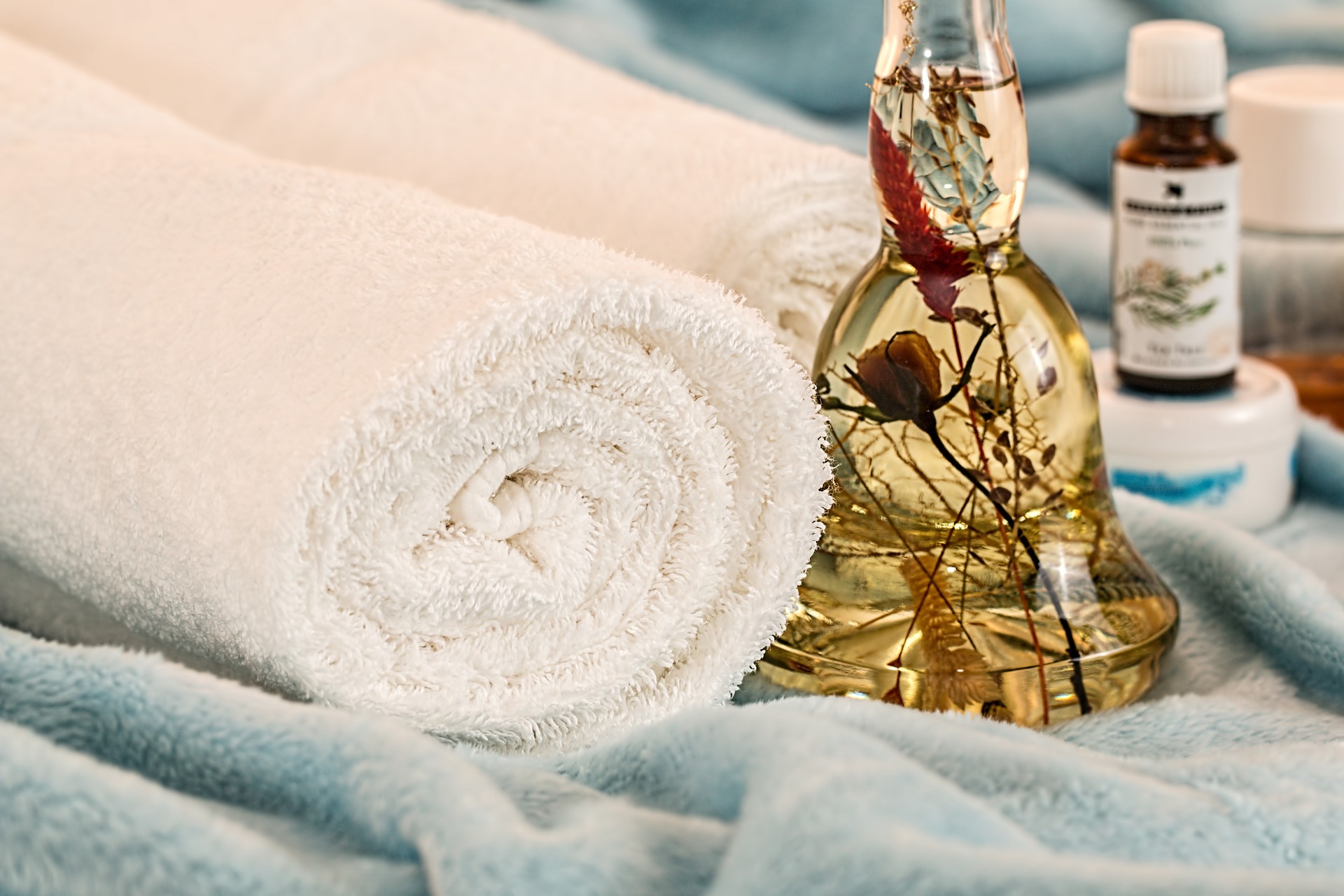Essential oils are the backbone of Aromatherapy. Their effectiveness is dependant on their safe and proper use, as well as on the quality of the oil used. Oils work in a much more subtle way than many commercially prepared products and in many situations are more suitable for preventative treatment rather than cure.
Develop a basic understanding of the safe use of Aromatherapy oils; and their production.
Knowing the botanical names of plants and how they are derived is an important part of Aromatherapy. Most people know essential oils by their common names, such as Lavender, Thyme or Eucalyptus. For instance, there are several different types of plant that are commonly known as Lavender, and more than one of these plants are used to produce lavender oil. Oil distilled from True Lavender, or Lavandula angustifolia, is the highest quality lavender oil. However, lavender can also be distilled from Lavandula x intermedia and Lavandula latifolia. All three smell very similar, and can even be confusing for an experienced aromatherapist, but the chemical composition of Lavandula angustifolia is far superior to the other two species and is a much better therapeutic oil.
All this and much more is explained in detail and with practical tasks in the course.
One of our Aromatherapy students said about the course:“This course was very interesting, challenging and very worthwhile” N. Mills
COURSE STRUCTURE
There are 8 lessons as follows:
- Plant Identification
- Introduction to Aromatherapy
- Essential Oils
- Safe Use of Essential Oils
- Carriers
- Growing and Harvesting Herbs for Essential Oil
- Methods of Extraction
- Hazardous Herbs and Oils
AIMS
- Understand the classification system used for naming plants and to be able to identify the family, genus and species names of plants used to produce essential oils.
- Define aromatherapy and its history, to understand how aromatherapy works, and the basic chemistry behind it.
- Identify a range of essential oils and their uses.
- Ensure that essential oils are used in a safe and controlled manner.
- Identify what can be used as a carrier for essential oils and why they must be used.
- Identify methods which can be used to grow, and harvest herbs used in essential oil production.
- Identify methods used to extract essential oils from plants.
- Identify herbs and oils acknowledged as hazardous to people, and which should not be used in aromatherapy, or with great care.
WHAT YOU WILL DO IN THIS COURSE
- Give a brief written report on what you understand about how plants are named.
- Why are common names not reliable for accurately identifying plants?
- Give the scientific names of ten different plants from which essential oils are derived.
- Give a brief summary of your knowledge of aromatherapy and essential oils.
- How are herbs promoted to the public in order to sell them.
- Write an essay on the history of aromatherapy and essential oil use.
- Suggest different blends that can be used for insomnia.
- Suggest different blends that can be used for treating a head cold.
- Discuss a range of oils that would be suitable for a travel kit (ie. to take on a trip – you may choose the destination and possible associated needs.)
- Discuss the use of aromatherapy for children.- List a range of oils that would be considered safe to use for children.
- Write a short essay on ways in which essential oils can be used.
- Discuss the use of essential oils on animals.
- List a range of types of vegetable oils appropriate for use in massage and indicate what types of skin the oils are good for.
- How do essential oils enter the body? Discuss how a carrier will assist with this entry.
- Submit the bath oil blends from a Set Task along with instructions on how to use them in the bath and what conditions they are good for.
- Explain why some herbs tend to be collected in the morning, some before flowering, some during flowering, and others at various times of the year. What impact does this have on the essential oil?
- From catalogues collected, explain why some oils cost more others.
- Discuss different methods of oil extraction and list their benefits and disadvantages.
- What is the difference between an essential oil and an aromatic oil?
- Explain various situations when different herbal preparations would be required.
- Compile a detailed costing for processing herb materials to produce essential oils.
- List a range of essential oils that are not safe for use in aromatherapy.
- Discuss how essential oils can be used safely and ways in which they should not be used.
- Discuss which essential oils may not be safe for use during pregnancy.





